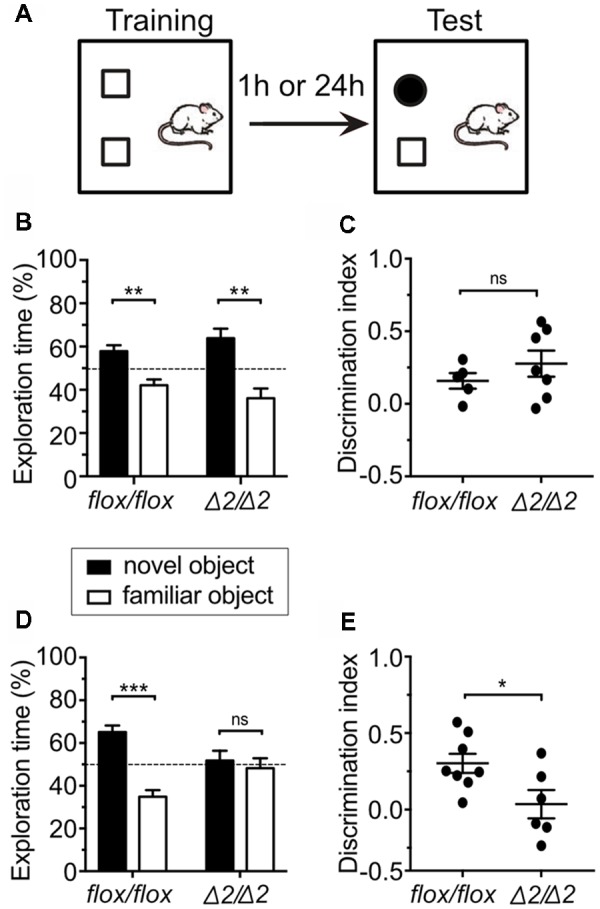Figure 2.

Dysfunctional long-term object recognition memory in Chd1Δ2/Δ2 mice. (A) Experimental setup for the Novel Object Recognition (NOR) test. Mice were tested either for short-term memory (1 h) or long-term memory (24 h). (B) Exploration time of both objects during the test session for short-term memory was measured and is expressed in % of total exploration time. The dashed line indicates the chance level (50%). Two-way ANOVA revealed a significant object effect (F(1,20) = 27.993, p < 0.001) for both Chd1flox/flox and Chd1Δ2/Δ2 mice. Duncan’s post hoc test revealed that both Chd1flox/flox (p < 0.05) and Chd1Δ2/Δ2 (p < 0.001) preferred the novel object instead of the familiar object. (C) The discrimination index for the novel object was calculated (see “Materials and Methods” section) and plotted for each animal. Statistical significance was calculated by unpaired t-test. (D) In the long-term memory test (24 h), a significant genotype × object interaction effect was observed (F(1,24) = 12.355, p < 0.01). Post hoc analysis revealed that while Chd1flox/flox preferred the novel object instead of the familiar object (p < 0.001), Chd1Δ2/Δ2 displayed similar preference for both objects (p > 0.05). (E) Same as in (C) for long-term memory (24 h) testing. Significance threshold was set to p < 0.05 (*p < 0.05, **p < 0.01, ***p < 0.001, ns, non-significant). For (B,C) n = 5 (Chd1flox/flox) and 7 (Chd1Δ2/Δ2), respectively. For (D,E) n = 8 (Chd1flox/flox) and 6 (Chd1Δ2/Δ2), respectively. Means ± SEM are shown.
